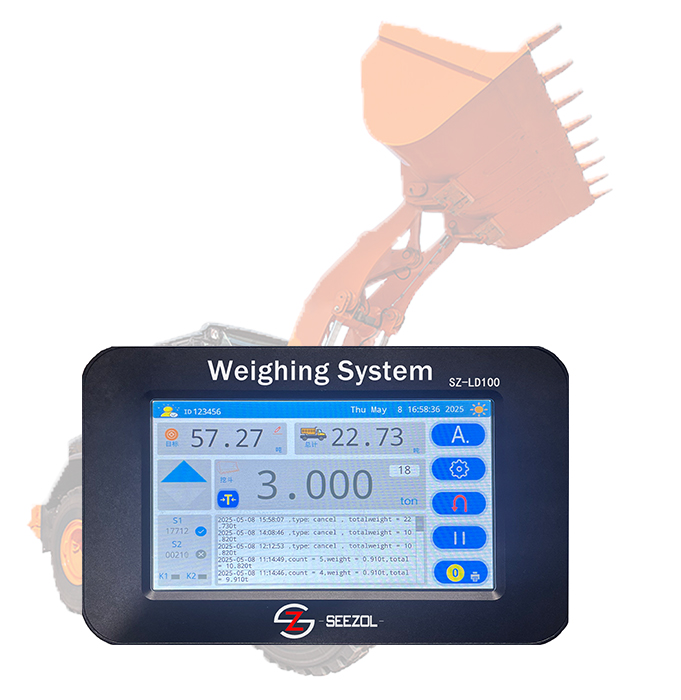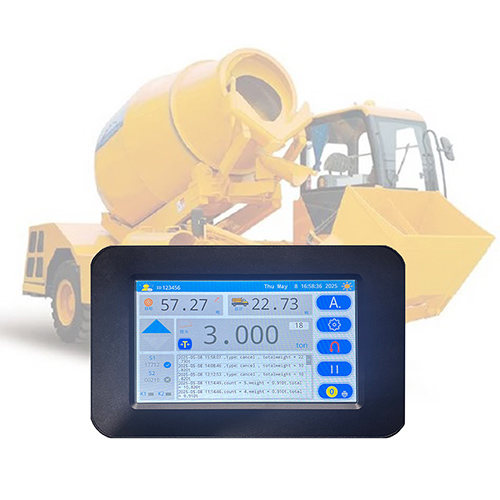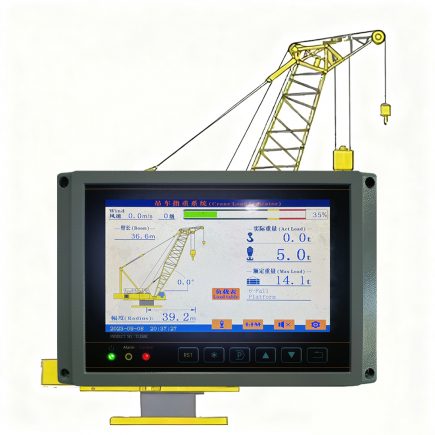The Crane Load Moment Indicator (LMI) is also called Safe Load Indicator(SLI),it’s a critical safety device for cranes, designed to continuously monitor parameters such as load weight, working radius, and boom angle. By calculating and comparing these values against rated load limits, it prevents overloading, which could lead to tipping, structural damage, or other accidents. Below is a detailed breakdown of its key components, application scenarios, and technological trends:
1. Key Components
The LMI operates through a closed-loop system of data collection → calculation → visualization & alarm, comprising the following elements:
- Sensor Array
- Measures physical quantities (e.g., weight, angle, length) and converts them into electrical signals.
- Includes load cells (for weight), inclinometers (for boom angle), and encoders (for boom extension).
- Controller
- The central processing unit, embedded with algorithms and rated load tables, processes sensor data and sends control commands.
- Display Terminal
- A human-machine interface showing real-time parameters, alarms, and operational status, supporting touch or button controls.
- Actuators
- Electromagnetic relays, hydraulic valves, etc., which cut off power to high-risk movements (e.g., hoisting, luffing) when overload is detected.
- Power Module
- Provides stable power (e.g., DC 24V) and may include backup batteries for uninterrupted operation.
2. Application Scenarios and Extended Functions
Tower Cranes
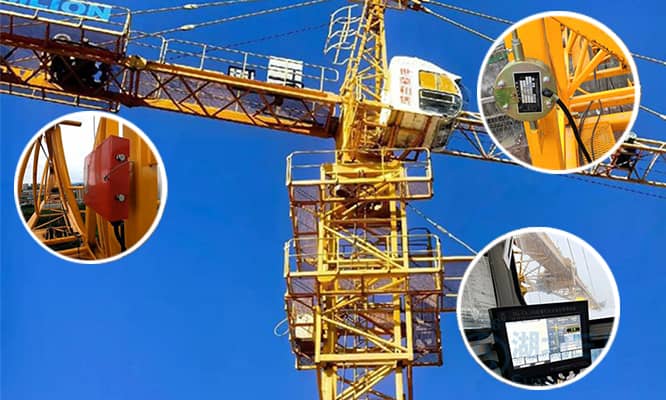
- Key Monitoring: Boom radius, hook load, slewing angle to prevent tipping from overload or moment imbalance.
- Extended Function: Integrated wind speed sensors automatically lock boom rotation when wind exceeds safe thresholds.
Mobile Cranes (Truck/Crawler Cranes)
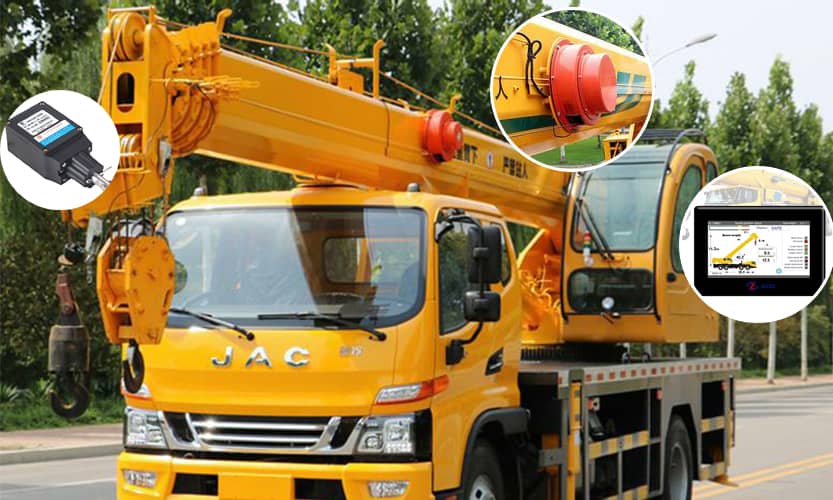
- Key Monitoring: Outrigger pressure (via pressure sensors) and boom extension, combined with chassis stability calculations to determine allowable loads.
- Extended Function: GPS tracking and remote monitoring via IoT, enabling real-time fleet management and data transmission to centralized platforms.
Port/Overhead Cranes

- Key Monitoring: Lifting load and trolley position to prevent structural damage from uneven container loading.
- Extended Function: Integration with anti-sway systems to optimize lifting speeds and reduce cargo swing through load data analysis.
3. Technological Trends
Intelligence and Automation
- AI Integration: Historical data analytics predict load trends and pre-warn of potential risks.
- BIM Collaboration: Simulates crane operation paths and optimizes load distribution in pre-construction BIM models.
Wireless Communication and Cloud Platforms
- 5G/Wi-Fi Integration: Real-time data upload to cloud platforms for multi-device cluster management and remote diagnostics.
Enhanced Visualization
- AR Technology: Overlays 3D boom models on cab displays to visually represent load distribution and safety margins.
Conclusion
The Load Moment Indicator (LMI) minimizes overloading risks through precise real-time monitoring and intelligent control, serving as an indispensable “electronic safety officer” in modern crane operations. Its continuous technological evolution—toward smarter, connected, and visually intuitive systems—will further enhance safety, efficiency, and sustainability in engineering lifting applications.






